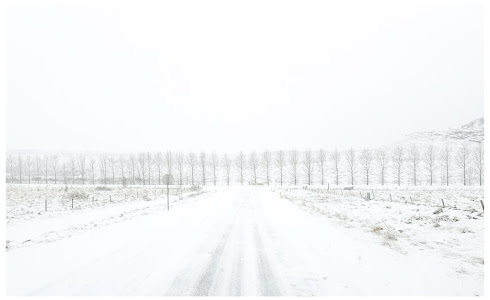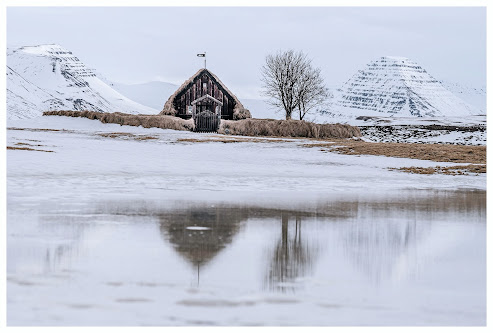That is what I ask of my camera kit.
My photography journey began in the mid-1960s. It was at that time my dad felt I was old enough to not drop his beloved Canon kit and he showed me how to capture properly exposed and in-focus moments (I'm still leaning the framing and composition part of the equation!). It was easy then. Focus ring and aperture ring on a relatively small prime lens (a 35mm, a 50mm or a 105mm), shutter speed and ASA on the top of the camera. Load film, set ASA, focus (split ring, still my favorite in the SLR world), play around with aperture and/or shutter speed to match the ball to the needle, press the shutter release. Easy peasy. Afterwards I waited a few weeks for film development to review the images and learn how well I had listened to dad's patient instruction. Sixty years on I am still outside with cameras shooting up a storm. Thank you dad for teaching photography to me!
While in college in the mid-1970s, my dad gifted me my first camera. It was the same camera (Canon FTb-QL) he used and that I had used, so I knew it well. Manual everything. Match ball metering. Prime lenses. Easy. A great kit that I still own and that still shoots a few rolls every year.
In the late 1980s I started buying zoom lenses, and packed away in the closet those "old fashioned" prime lenses. Much better to carry around a wide zoom, normal zoom and a tele zoom. More capability! Bigger and heavier, they must be better, right? And best of all, I look like the pros!
In early 1990s the auto-everything SLRs were mature and ubiquitous. By then my Canon was long in the tooth but the new Canon bodies employed a different lens mount with no compatibility with my older FD/FL lenses. I had no reason to stay with Canon and Nikon's advertising was very persuasive. I bought an N90, a few zoom lenses and a bigger camera bag.
In the late 2000s I moved to Japan for a few years. By then, in addition to having the N90, I had been gifted a Nikon D100 (with the battery grip, just like the pros!). I had also added more lenses, flashes, cables, wires and my bag was larger and heavier than ever.
It was on one of my first weekend photo walk-abouts in the Tokyo metropolitan area that I realized I had too much gear. That very next weekend I packed away the Nikon gear and bought a Canon PowerShot G10 15MP digital point-and-shoot. For three years I traveled all over Japan and Asia with that camera and it opened up a whole new world for me. And it continued to perform well for many years after I returned to the States. Still have it, still works well (traveled with me to Scotland earlier this year). Simple and portable. A theme that has resonated with me ever since.
In the waning months of 2019 I began looking at the current offerings of the camera industry. Gone was film, gone were the SLRs, and the DSLRs were being replaced by mirrorless cameras. No reflex mirrors flopping up and down with each image. Less moving parts, less to go wrong (although to be honest in my decades shooting SLRs I had never had a mirror or shutter failure). What's not to like about mirrorless cameras? They are computers with lenses. They even get software upgrades. Being computers, their software has a setting for every scenario a photographer would ever, in multiple lifetimes, come across. To support that increased functionality, manufacturers covered the cameras in customizable buttons, knobs and dials. Of course that required every possible feature in these auto-everything wonders to be accessible via ever expanding menu schemas. More features, more menu headings, and sub-menus and sub-sub menus. As one example, per Google, the full operating manual for the Nikon Z8 is 948 pages. The simplified User Guide is 239 pages. I'm not picking on Nikon. The Z8 is an amazing, pro-level camera deserving of all the buzz it receives in the camera media. And I am sure Canon's and Sony's manuals are just as long.
However, the standard mirrorless camera of today is just too complicated for me.
Don't misunderstand. I'm plenty smart enough to figure them out. I just don't want to have to figure them out. I want to feel the same joy, to experience the same simplicity of photography I felt back in the 1960s and 1970s. I'd like to look at the camera and know its settings. Aperture, shutter speed and ASA (I mean, ISO). While there are exceptions, that just isn't possible for the vast majority of mirrorless cameras on the market.
To be fair, these are modern marvels. The image quality of a fairly straight forward sub-$1,000-ish digital mirrorless camera is superb. Better than ever in the history of photography. And the expensive end of each company's sensor / body offerings are even better, with even more features! As new models come to market the bar is raised even further. More resolution, faster processing, better video specs. Amazing cameras. But for me, it's too much. I feel less like I am taking a picture with a camera and more like I am taking a picture with a computer, or with an exceptionally large iPhone Pro Max.
I feel no joy.
Instead,
I want simple.
I want portable.
And that theme led me to the Fuji X100 series, then to the Fuji X-Pro series and finally to the Leica M series.
About the Fujis I will state only that they are, like all mirrorless systems, superb cameras with an amazing lineup of lenses supporting them. Although my X-Pro3 was sold off to help fund a used Leica M10R, the X100V remains in my dry box. Yes, it's complicated. It is a modern mirrorless with buttons and dials. Yes, the menu system requires study, and every time I pick it up I have to refamiliarize myself with the operating system. But the optical portion of the hybrid viewfinder is a joy to look through. Clean and unobtrusive. Look through one, shoot with it for a day and you'll understand the buzz behind those cameras.
It was the optical viewfinder of the X100/X-Pro that led me to buy a used Leica M10R. Optical viewfinder, manual rangefinder focusing, manual aperture ("Aperture priority"), prime lenses which don't talk to the camera body, a solid chunk of hand formed metal (there is no doubt you are holding a finely crafted piece of machinery), it is an amazingly versatile and rugged camera. And it is my go-to, daily carry. Every time I walk out of my house it is with me. In the past two and a half years, I've hauled it through Iceland, Scotland, France, Central Europe, London, several U.S. states and multiple National Parks. Snow, ice, rain, wind, dust. The camera just keeps on taking pictures. To be clear, it has been well used, but not abused. I protect it best I can and make sure it is clean and dry before tucking it in for the evening.
Regarding simplicity, while I have not completed any formal studies on this topic, based on having perused menu systems of a variety of camera systems, it seems to me none are simpler than Leica's. In fact, fully 99% of the time I enter the menu system it is to format an SD card or to select the correct lens upon mounting it to the body. I can look at the camera, see the ISO, shutter speed, aperture and the distance where the lens is focused. I'm ready to shoot. Simple.
As for portability, when carried across body and under a jacket, no one knows I have a camera. Although stealthy carry may not be a driver for most folks, carrying around a lot of weight often is. My standard travel kit is the camera body and three small prime lenses - a 28mm f/2, a 50mm f/1.5 and a 90mm f/2.8. The 28 is usually on the camera while the 50 and the 90 are carried in jacket pockets. A spare battery in my pants pocket along with a spare SD card and I am good to go. For daily walks locally, a 35mm f/2.8 is mounted and I'm out the door. Although I have many, I rarely use a camera bag these days.
I love my M10R. However, the M system is not perfect. Far from it. The longest, native mount, rangefinder coupled focal length available is 135mm. I own one and it can be a challenge to focus. Through the optical view finder the 135mm focus box is quite small. When using that lens I usually attach the Leica Visoflex to the coupled hot shoe and look through it to focus and compose. Through the Visoflex I see a standard mirrorless electronic viewfinder. It is not the optical viewfinder, manual rangefinder experience I have come to love. Bottom line is the only way I can shoot longer than 135mm is to adapt a third party lens onto the M10R and shoot through the Visoflex. I'm not willing to do that and those images don't get made. Fortunately, with the 40MP sensor I can crop into a scene and still have resolution for a nice final image. For those cases, my 90mm and more rarely, my 135mm, work well.
If you want zoom lenses, the Leica M system is not for you. There are no zoom lenses available for the system. Leica does produce two lenses which each enable three different focal lengths. But that system is like three prime lenses housed in one lens body. They are not traditional zoom lenses. And they are big, heavy, f/4, and expensive. I am very happy shooting small, fast prime lenses. Zooms are convenient but I can't think of a scene I missed by not having a zoom. And the more I shoot primes, the more awkward I feel when I shoot zooms.
Battery life is too short. However, that is overcome through the purchase of additional batteries. On a daily basis I manage power such that I don't need to change batteries in dicey situations and I have never missed an image due to a dead battery. Regarding those additional batteries, there are no third party manufacturers of Leica M systems batteries. All of mine are Leica branded and all are quite expensive at $200 each!
Finally, speaking of "expensive," it is no secret that Leica systems are very expensive. As of this post, through B&H, the cost of a new Leica M11 is more than the cost of a new Nikon Z8 body AND a new Nikon Z9 body together! Either of those camera bodies have so many more features and capabilities to offer and much more bang for the buck. However, neither of those cameras are simpler to use and both are far less portable than the M10R.
Building out a camera kit gear involves tradeoffs in cost, features, capabilities, simplicity and portability. Every photographer needs to work through which combination of tradeoffs are most important to them. For me, at this point in my life, simplicity and portability are paramount.
Cheers all!









































